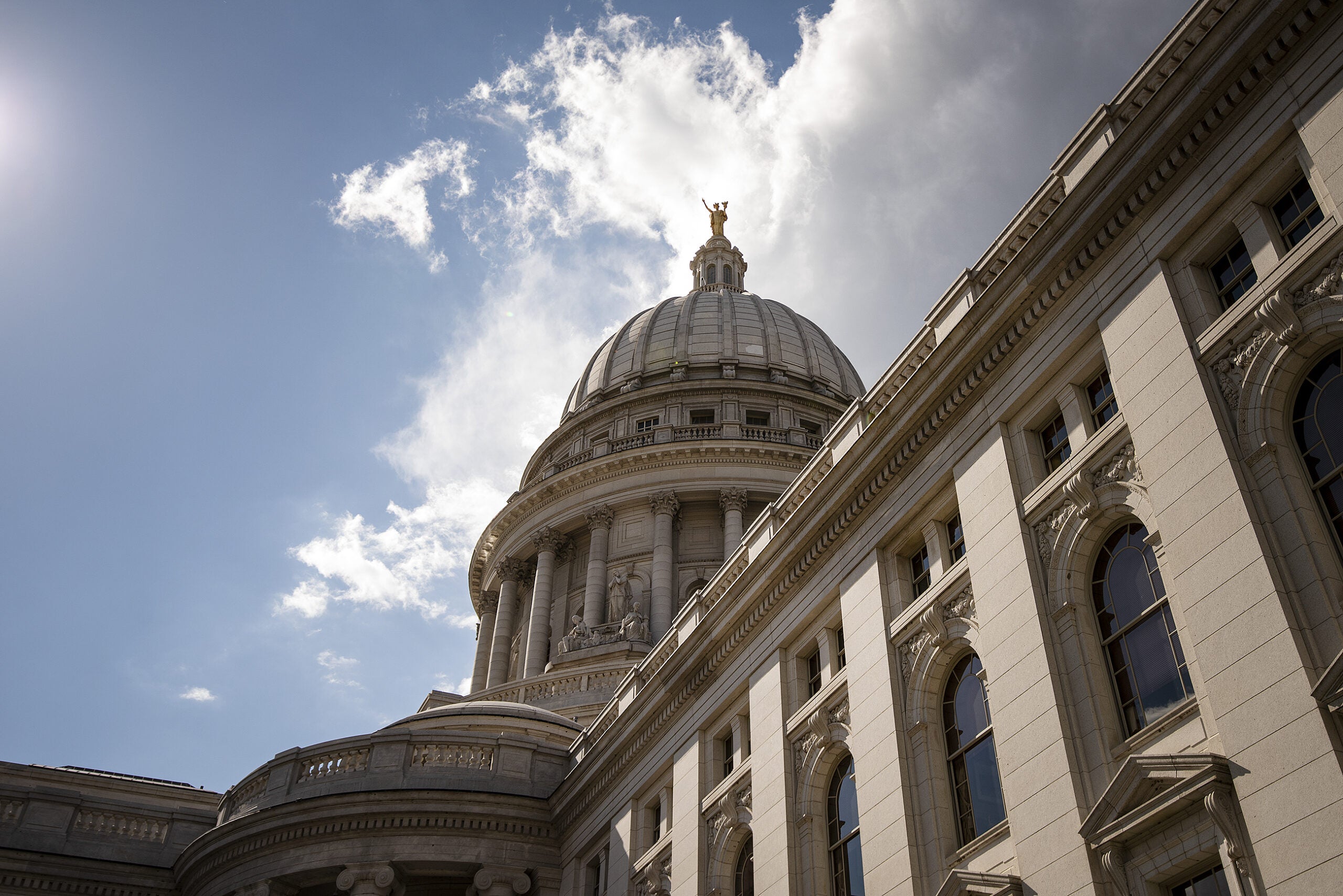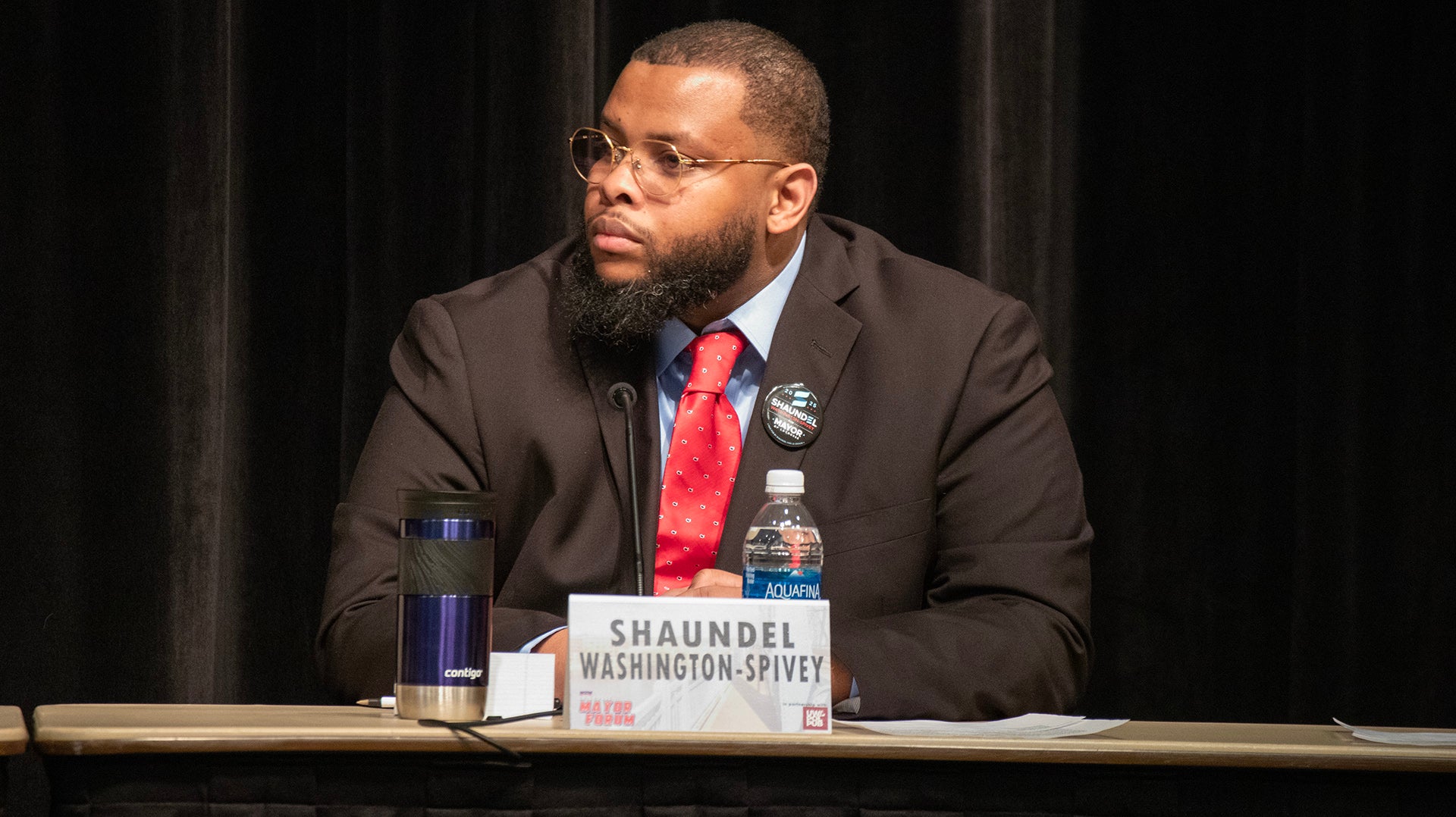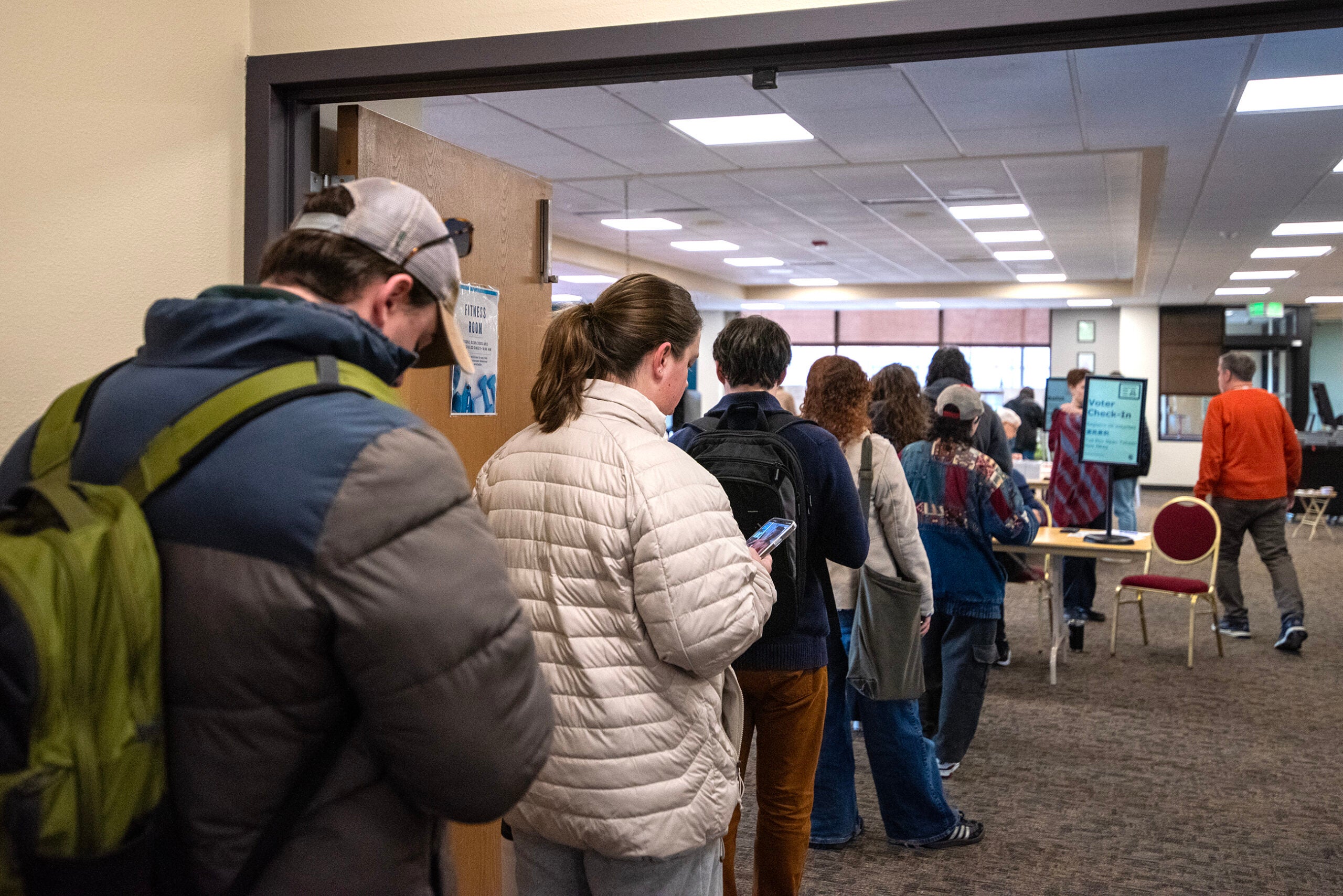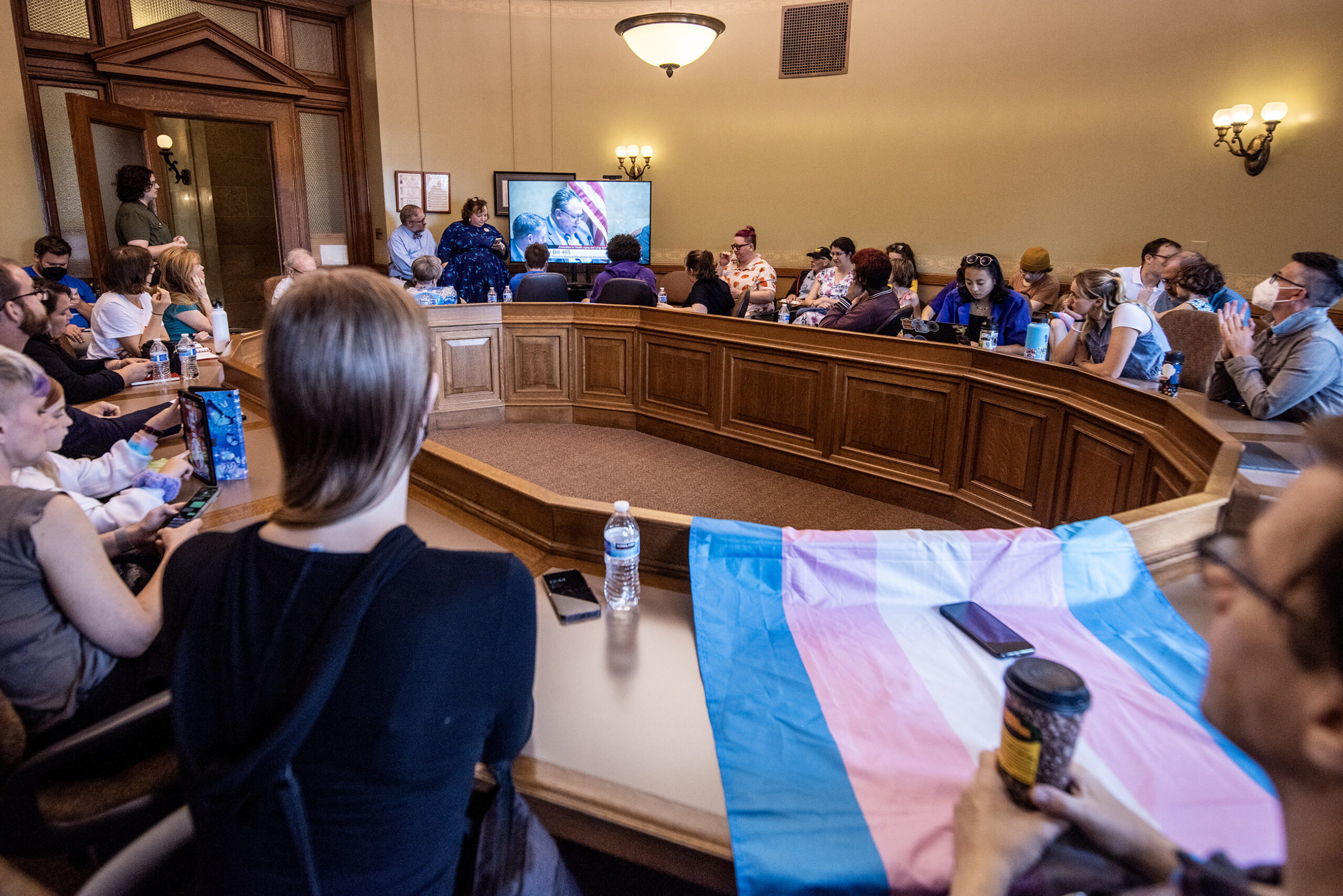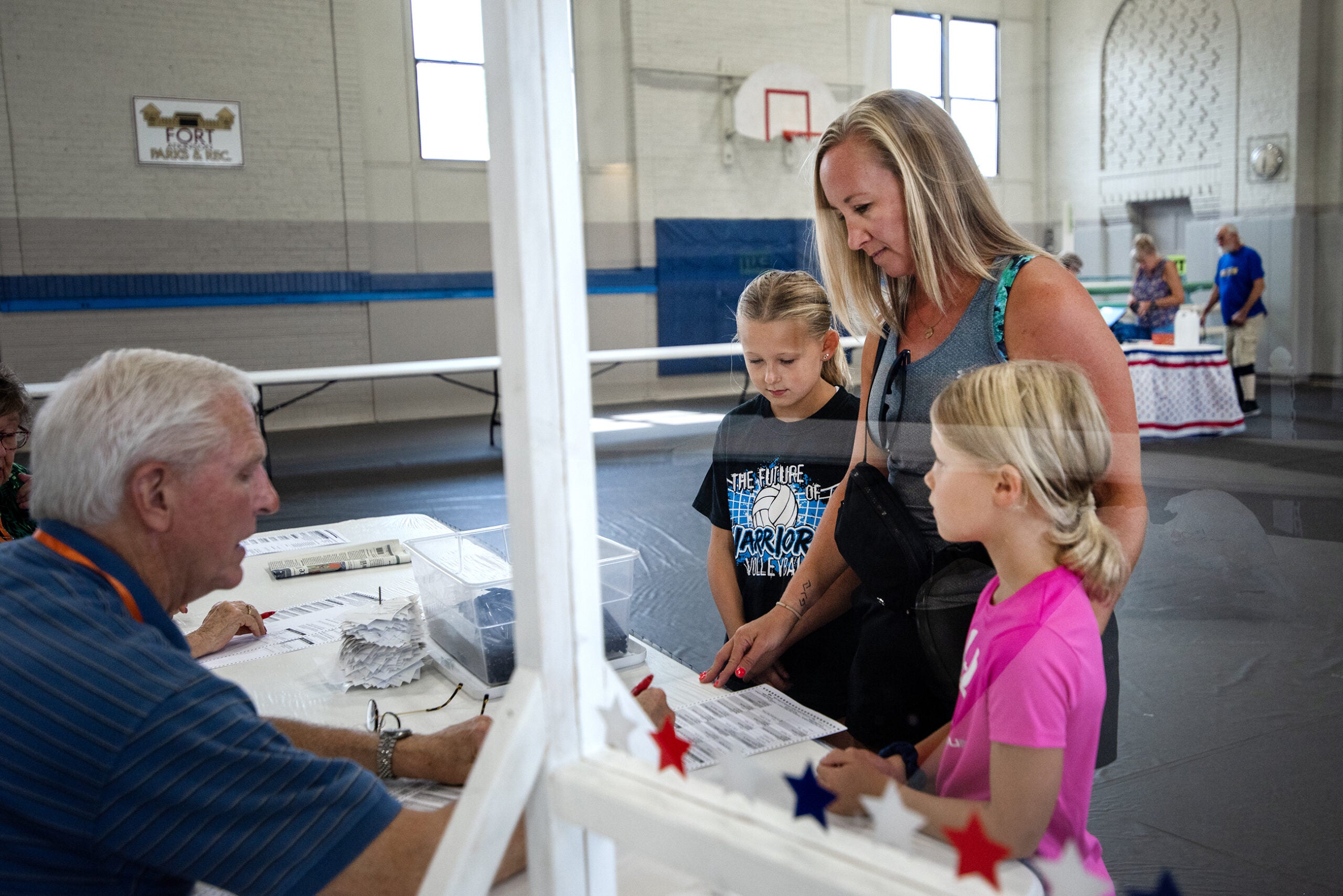More female lawmakers are serving in the Wisconsin state Legislature than ever before, with women holding around 31 percent of legislative seats as of 2021.
But a new report from the Wisconsin Policy Forum shows the state, like the rest of the nation, still has a ways to go before reaching gender parity in elected offices at all levels.
The report found that Wisconsin is similar to the national average when it comes to the percent of current female lawmakers. That’s a change from the 1980s through the early 2000s, when Wisconsin outpaced the rest of the nation in the number of women in the state Legislature.
Stay informed on the latest news
Sign up for WPR’s email newsletter.
Policy Forum fiscal researcher Ashley Fisher said breaking down the number of female lawmakers by party shows that an increasing number of female Democrats has largely driven recent growth in the Legislature.
Fifty-four percent of current Democratic lawmakers are women, compared to only 17 percent of current Republican legislators.
“The Republican Party was fairly consistent in the number of women from around 1980 through 2005, but then started dropping off around then. There could be a number of factors of why that’s the case, but we couldn’t really dig in further,” Fisher said.
Fisher said Wisconsin has also seen a growing number of women in municipal and county elected offices. But women still make up less than a third of local elected officials.
The report found that women made up around 29 percent of the state’s city council positions and 24 percent of county board supervisor seats. Only 13 percent of the state’s mayors are women and 6 percent of county sheriffs are female.
But some local offices had very high numbers of women serving. Ninety-three percent of clerk of court seats were held by women, while 83 percent of county treasurers were female and 82 percent of county clerks.
Fisher said having fewer women on county boards or in mayors’ offices could be contributing to fewer statewide female candidates, because local offices are often seen as a springboard for state and federal campaigns.
Victoria Solomon is a community development educator for the University of Wisconsin-Madison’s Division of Extension in Green County. She has studied women’s participation in local elected office and what barriers keep more women from running.
Solomon said one of the biggest factors affecting the number of women running for office is the fact that women are less likely to be asked to run for office.
“Having people who are thinking about who to ask to consider running for office, having those people think about starting with strengths and perspectives and experiences, and looking at diversity amongst those,” Solomon said. “We know that having diverse voices at the table helps build better decisions.”
She said having fewer female candidates for state or federal office can also lead to assumptions at the local level about who should be on the ballot.
The report found that Wisconsin has made some significant progress when it comes to representation at the highest levels in the state.
Wisconsin leads the nation for current female representation on the state Supreme Court, with six out of seven, or 86 percent, of justices being women. The report found that the Wisconsin Supreme Court has had three female chief justices in a row with the appointment of Chief Justice Annette Kingsland Ziegler in May. The court overall has only had nine female justices throughout its history.
Fisher said it’s also significant that Gov. Tony Ever’s current cabinet is the first in state history to have equal representation for women. Nine of 17 cabinet positions are currently held by women, making up 53 percent. By comparison, former Republican Gov. Scott Walker and former Democratic Gov. Jim Doyle had cabinets with 35 percent of women at their highest points.
“Women continue to fill more and more positions of leadership in the business world and across nonprofits. As that becomes more and more common, there’s more of a chance that women will see themselves as qualified to run,” Fisher said. “Women seeing themselves as qualified can be a factor in whether or not they decide to run, which is why people asking them is important. And I think there has been movement there as well.”
Solomon said the progress is encouraging, but the goal should be 50 percent of elected officials.
“We’re not at parity now, so how do we keep going to get to that point?,” she said. “We have a lot of (local government) seats where people aren’t running. So overall encouraging more people to be involved, to think about running, and as part of that with the recruitment, not making assumptions about who to recruit, being really intentional about that.”
Fisher said she was not able to find enough data on representation of non-binary people in elected office and said more study on that population is needed. And she said she hopes this report will kickstart further research on other kinds of representation among elected officials, including race, ethnicity and life experience.
“It’s not just the fact that women should be 50 percent. It’s the value that diverse people, whatever diverse means, the value that they bring to office and the policies they prioritize and the context that they have as they serve,” Fisher said.
Wisconsin Public Radio, © Copyright 2025, Board of Regents of the University of Wisconsin System and Wisconsin Educational Communications Board.
